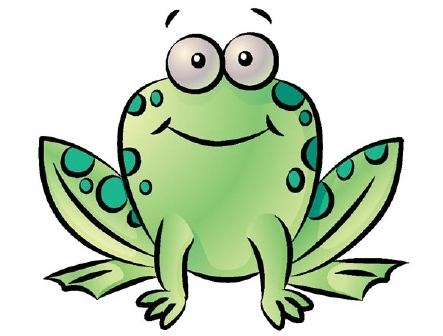1. The organs of the frog and how they function
2. The connections between frogs and humans
 |
Once the frog was open, I was amazed to sell all the organs in one glance. First was the liver. Unlike a human, a frog has three parts of it's liver. The liver creates bile which is a substance that break down fats. Therefore, without the liver the frog would be overloaded with fats because there is nothing to break them down. The next main organs belonged to the digestive system. They were the stomach which was connected into the small and large intestine. Once the bolus( the food after it is mechanically and chemically broken down) goes down the escophagus, it enter the stomach where it is broken down even more by muscles. Afterword, it goes into the small intestine where the nutrients is absorbed. The nutrients go though the bloodstream and give energy to cells so they could function properly. The remains of the bolus enters the large intestine where it is turned into waste which then exit the body through the anus,a small opening at the end of the digestive system. The next set of organs saw were the two pairs of lungs. The lungs looked like two brown balloons. I was shocked to see that the pair of lungs were so far from each other. The lungs is where the frog gets oxygen. If there was no oxygen in the frog, nothing would power the cells. The next organ I saw was the spleen. The spleen was a red balloon which stored blood. Another organ which looked similar to the spleen was the gallbladder. the gallbladder was a green sac which stored bile. The spleen and gallbladder look similar because they are both circular objects. Sometimes they are very hard to tell apart but the gallbladder is always green and the spleen is always red. Lastly, the most important in the organ i found in the frog was the heart. The heart was deep inside the frog covered by other organs. The purpose of the heart is to pump blood for the bloodstream to move. If the heart stopped no nutrients or oxygen would get to cells, therefore the frog would be dead. Lastly, the organ that was covered all round the organs was peritoneum. This is a spider web substance that covers organs like a membrane. In frogs there were also a lot of fat bodies which were yellow noodle-structured that support the frog. Together, all these organs cooperate to make sure the cells have enough to function properly. Everything the frog does is for the cells. Therefore, everything is connected. If one organ breaks down, everything will be effected. For example, if the stomach is not functioning correctly, the frog cells will not receive any energy to work.
 |
| Source: |
Throughout the dissection, I was amazed by how complicated the organism was. A small frog yet such a complex system it was. In addition, I was intrigued by the differences between a male and female frog. The main difference was that a female contained eggs. The eggs were black sphere object and there were a lot of them. They are located next to the ovaries. On the other hand a male frog has a urinary bladder.
In addition, the similarities and differences between human and frog stopped me and made me think. The aspects that were the same with the frogs and human were that we both have a stomach, small intestine, large intestine, heart, lungs, pancreas, and gallbladder. All these organs both work the same function in each of our species. I was thoughtful of this because on the outside and frog and human have no physical connections. For example, a frog walks on four legs while human walk on two. Frogs have such a size differences to humans. But in the inside we are both connected. All our organs would together to satisfy our cells. We both have a reproductive system to build our population. We both have a heart that pumps blood. Both have lungs that give our body oxygen.
In conclusion, I learned that in a frog and human there are some many ideas that could fit together. Two species that look so different are really the same in the inside.
In conclusion, I learned that in a frog and human there are some many ideas that could fit together. Two species that look so different are really the same in the inside.
Other sources to learn more about frogs:
www.mhhe.com/biosci/genbio/virtual_labs/BL_16/BL_16.html
http://www.surgery-games.org/43/Dissect-a-Frog.html
By: Whiteknight83
www.mhhe.com/biosci/genbio/virtual_labs/BL_16/BL_16.html
http://www.surgery-games.org/43/Dissect-a-Frog.html
By: Whiteknight83
